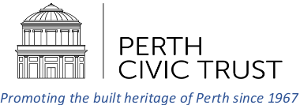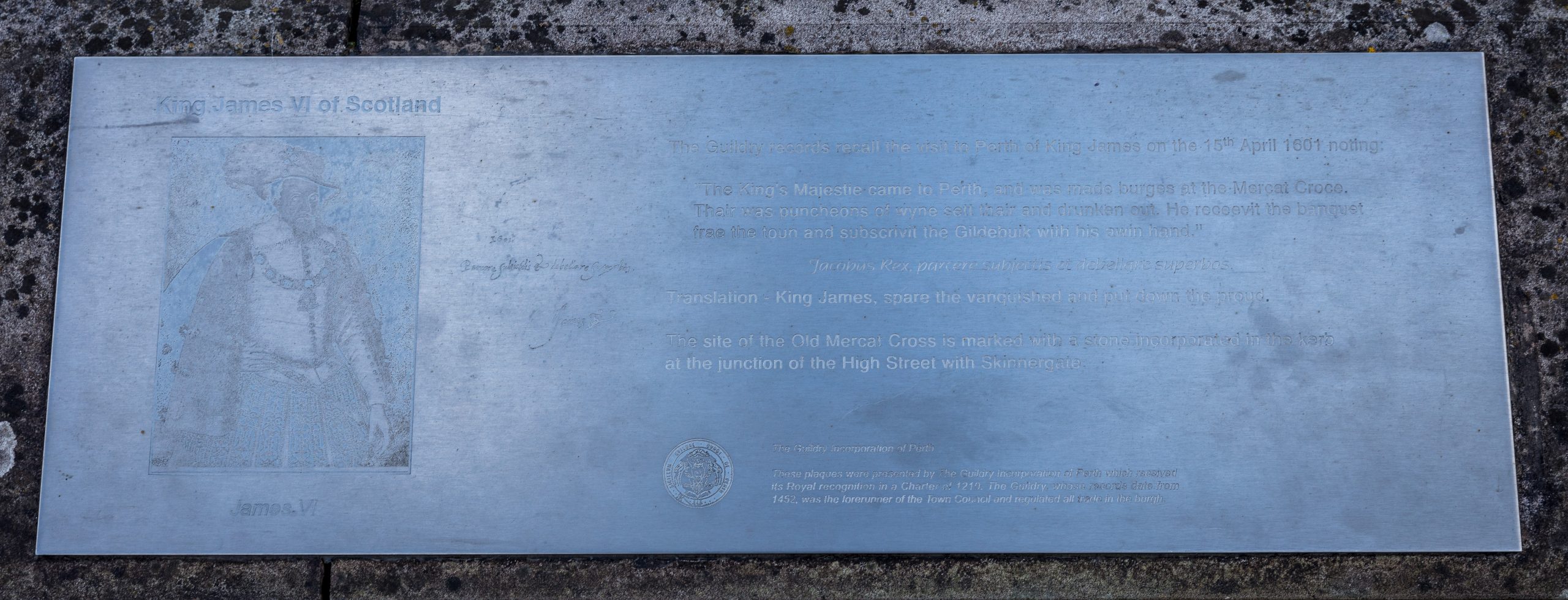Charles I visit to Perth in 1633
King Charles I ascended to the English throne in 1625 and was crowned in England that year. However, the Scots insisted that he should also be crowned in his northern kingdom. The ceremony took place in Edinburgh, at the Palace of Holyrood House, on 18 June 1633, amid an elaborate and extravagant royal tour. This tour included a visit to Perth, commemorated in this stone plaque in the flood defence wall in Tay Street. It recounts that he was entertained by members of the Glover Incorporation performing a sword dance on a wooden platform moored on the River Tay.







